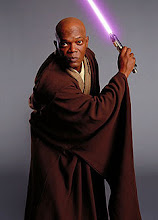My final design has taken a long time and a lot of hard work to get it looking like it is today. I have encountered many problems but I over came them by modifying my design and using my initiative. I am happy with the final product and I'm proud to say that I made it.
My original conceptual design was completely different to the one I made. The original was very complicated and not quiet to my taste so I changed it to something that I preffered. When I found out the dimensions could be enlarged I changed the size from 120mmx120mm to 200mmx200mm. I also never planned to have a arcylic plastic strip through the middle (between my top and bottom plate). I only decided to have it towards the end of the year.
In the first half of the year we went on a class field trip to the tomb of the unknown soldier, Waitangi park and civic square. These three destination have built in solar powered lights everywhere. We examined these lights for shape, how they worked and how they effected the environment. We also drew sketches of these lights and noted what materials they were made of. After the field trip we researched materials for ourselves. I researched aluminium and arcylic plastic as I planned to use mainly aluminium and possibly arcylic. Lucky I did because in the end I did use arcylic. We also did research on the poacita grass that our light were aimed to light up. This was helpful because it confirmed that my light was a good shape for the job.
On free hand (a computer programme) I played around with my new design even further. I then finished what I wanted my design to look like and made my mock up out of card board. Hard card board and i used masking tape and hot glue to seal it. My mock up looks similar but not identical to my final product.
My first problem with my design was that when I put it in the cam2 machine, I hadn't set it down hard enough so I wasted a piece of aluminium. Terry was not happy. The next time I strapped it down harder with double sided tape and masking tape. This made a great result and gave me a perfect top plate. The one problem with it was that I couldn't use the metal sheet bender to bend it into place. So instead i improvised and used my hands. This worked surprisingly well but I would have received a better result with the metal sheet bender.
Then I came across another problem. Because of my bizarre shaped top plate I would have to create my brackets for it through trial and error. It took me three periods to figure out how to make them properly. This was inconvenient time wasting and left me further behind the class.
This was the point were Terry suggested making the arcylic mould for in between the top and bottom plate and I chose to do it. I came in on a Saturday and made the shape out of my mould out of wood. This went smoothly but it took me three attempts to get the actual arcylic mould. mainly because the heat was too high and I wasn't great at using the vacuum machine.
So alas my light fits all the specification and constraints but one. My light exceeds the budget of $30.
But anyway, I continued with my light and asked Terry to help me with the vacuum machine and he got it to work and my arcylic mould came out perfectly. I then used the cam2 machine to cut out my bottom plate. I nearly made the same mistake as last time but I corrected myself just in time. When I got the bottom plate (after the cam2 had cut it) I bent it into shape again using my hands. I didn't need brackets for the bottom plate because I had designed my arcylic mould to fit into the bottom plate and it could be used as brackets. So I riveted them together and began on my circuit.
This circuit was no friend of mine. First off, I took out the wires and battery snap and re-wired it. I then spent hours trying to get the LED's working. I say LED's because I had modified the circuit from a series circuit with one 3.6v LED to a parallel circuit with two 3.2v LED's. Yet later on this deemed pointless as it seemed the circuit was fried anyway. So Terry got me a new circuit which I had to redo the process of re-wiring it and so on. I then spent a hour switching round the wires of my LED's and re-soldering the wires onto the circuit until I finally got the circuit working. Divine intervention.
Then I drilled holes in my top plate and a piece of arcylic plastic for my soler panel wires to go through. The arcylic plastic piece was so the was a gap between my solar panel and top plate. This made sure the circuit didn't corrode. I stuck the arcylic piece on with some incedibly strong glue. I then stuck the solar panel onto the arcylic bit and sealed the edges with silicon. Then I put the bottom plate and arcylic mould onto the top plate with the circuit inside. I took a picture of this inside a dark corner using a schools camera and I was finished.
I am very happy with the final product and I'm glad that I completed it. I am proud to say that I made it.
Henry Nicholls
PEACE
Saturday, November 15, 2008
Subscribe to:
Post Comments (Atom)

No comments:
Post a Comment